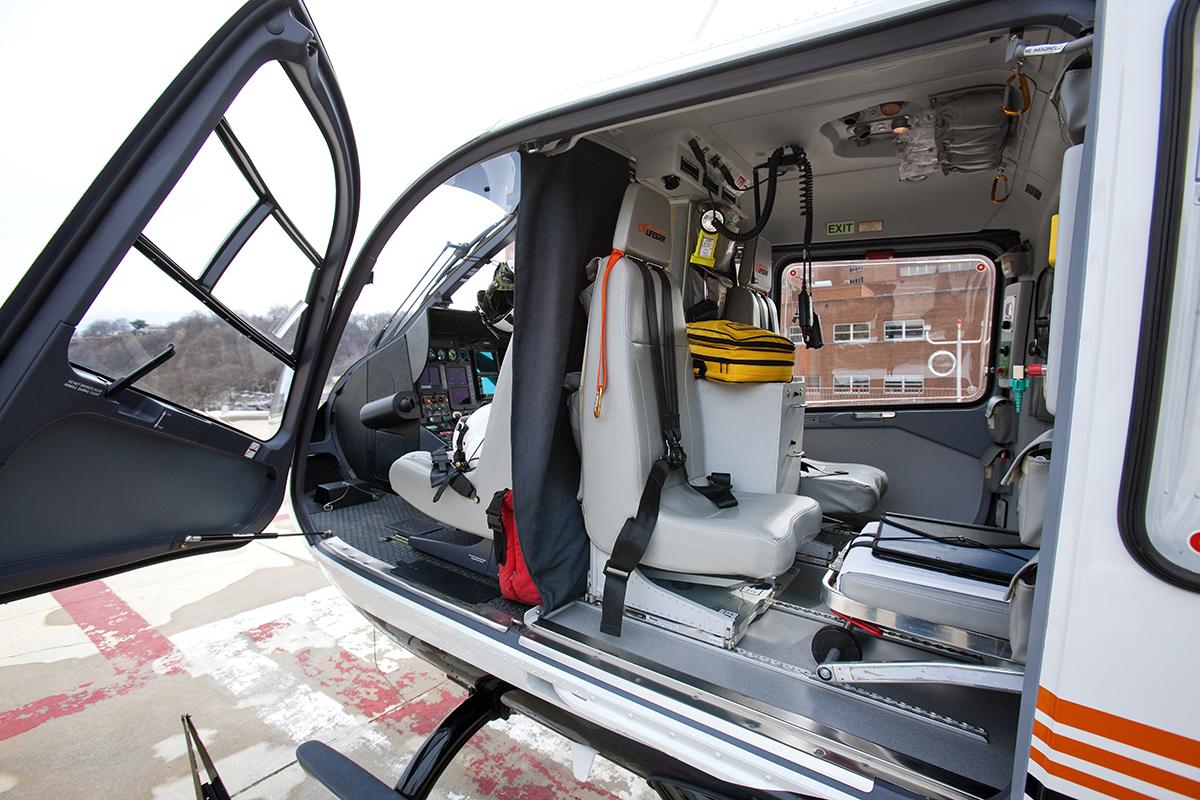UT LIFESTAR FAQs

UT LIFESTAR employs well-trained and experienced paramedics and nurses, who consistently exhibit safety, patient, and customer-centered behaviors. Our pilots train in the aircraft every 90 days on critical aspects of helicopter flight and aviation safety. An airframe-specific, factory trained helicopter mechanic is assigned to each base of operation. The Med-Trans aviation training program is unrivaled in helicopter EMS.
We currently use two Eurocopter EC-135 and three Bell 407 helicopters. The EC-135 helicopters feature twin-engines and are certified for Instrument Flight Rules, allowing them to fly in most adverse weather conditions. The Bell 407 is a single-engine aircraft certified for Visual Flight Rules. Both airframes are the most popular helicopter EMS airframes in the industry and allow for excellent patient access during flight. All aircraft feature the latest in night vision technology, satellite tracking and SAT-PHONE capability, and multi-band radios for communication.
Each flight crew consists of a highly trained flight paramedic, flight nurse, and pilot. Each crew member has an average of 10 years of experience in their respective field prior to their joining the UT LIFESTAR team. Read the employment requirements.
Night vision goggles will allow pilots to fly UT LIFESTAR helicopters to area previously deemed “off limits” due to the lack of visual light reference. This will increase operational capability. The pilot and flight crew will be able to better detect hazards and obstructions (telephone poles/wires, high tension power lines, trees, fences, mountain ridges etc.) when flying into “unimproved” landing areas. This enhancement will make flying safer for both flight crews and patients.
Night vision goggles (NVG) contain an image intensifier tube, which is the “heart” of the night vision product. The photocathode senses even the smallest amount of light in the night sky (from the moon and stars) that the human eye may not detect and converts the light energy (photons) into electrical energy (electrons). The electrons exit the cathode, then enter and pass through the microchannel plate (MCP), a thin disk about the size of a quarter, which contains over 10 million channels. As the electrons move through the channels, they hit and “bounce off” the channel walls. Each time an electron strikes a channel wall, more electrons are released. By the time the electrons exit the MCP, they have been multiplied thousands of times. The multiplied electrons then strike a phosphor screen, which is similar to a miniature television screen. When struck with electrons, the phosphor screen releases photons (light energy that “glows green”) in the same image pattern by which the photons originally entered the MCP. Only now the image, that original, small amount of light, has been greatly intensified to a visible level of brightness. The user, then, sees (or “watches”) the intensified image on the screen.
The distance someone can see, or the range at which an object can be detected, varies depending upon: (1) the generation of technology the person is using; (2) the size of the object(s) in the viewing area; and (3) the level of darkness/light conditions (i.e., full moon, starlight, cloudy/overcast). All these factors play a role in determining how far one can see using night vision. Most night vision products are “1X” unless they’re equipped with special magnification lenses, so distance is viewed in “real time.” Usual “unaided” night vision is 20/200 or less. With the goggles, it is 20/20. The lenses require no magnification and may be focused to infinity.
No. Using night vision for aviation requires very special training. Only military aviators and pilots who have completed FAA approved NVG flight training are authorized to use night vision goggles for night vision.
The night vision goggles LIFESTAR uses cost approximately $10,000 per set. Other associated costs with an NVG program include aircraft cockpit modification, an FAA-approved ground school/training program, and night flight training for pilots and crews.
Aviation Specialties Unlimited, Inc. in Boise, Idaho, provided the goggles, aircraft modifications, and associated training. ASU, Inc. is a recognized leader in the aviation community for its work with NVG and its commitment to safe night flying.
For more information about the night vision goggle program, call Terry Neal at 865-305-9109.